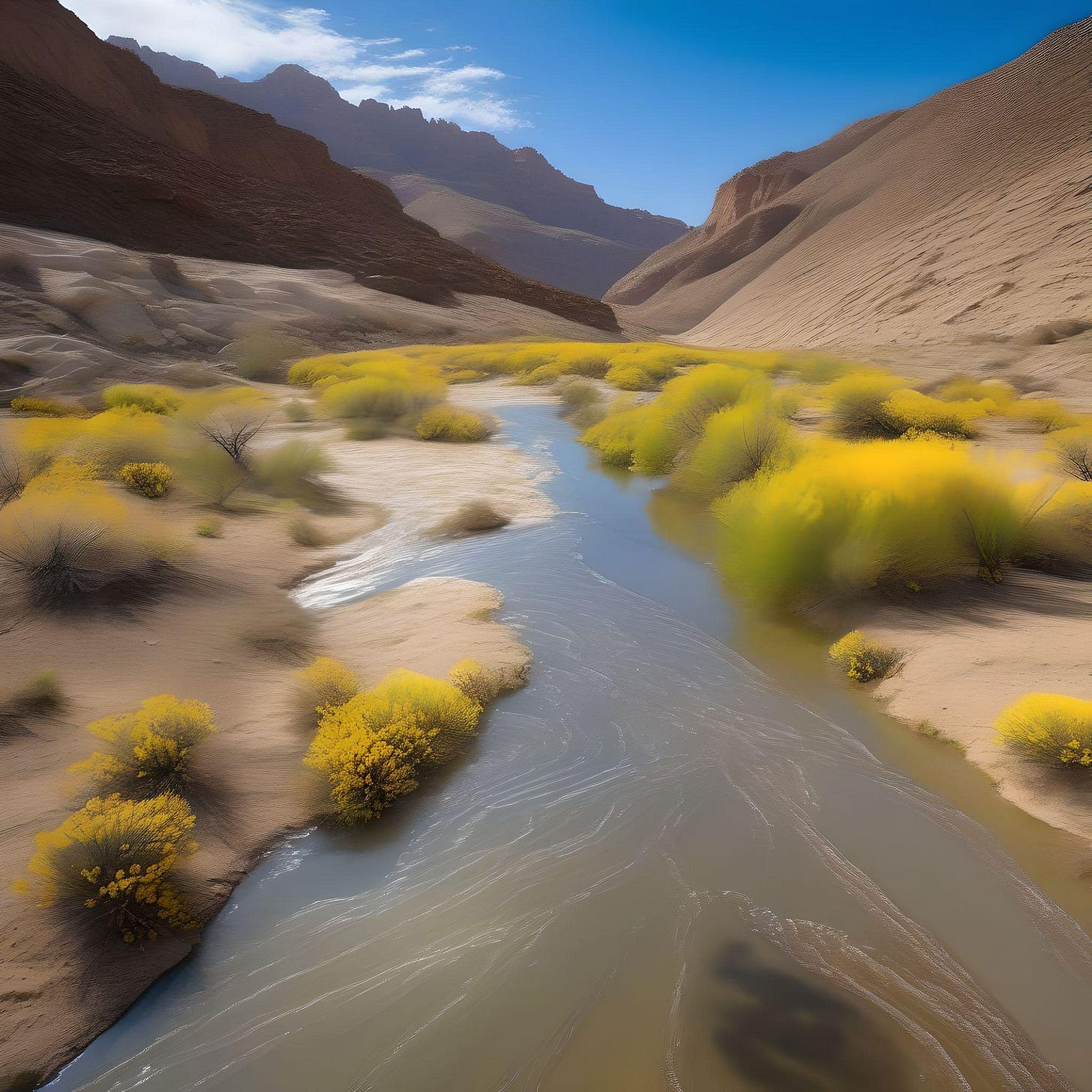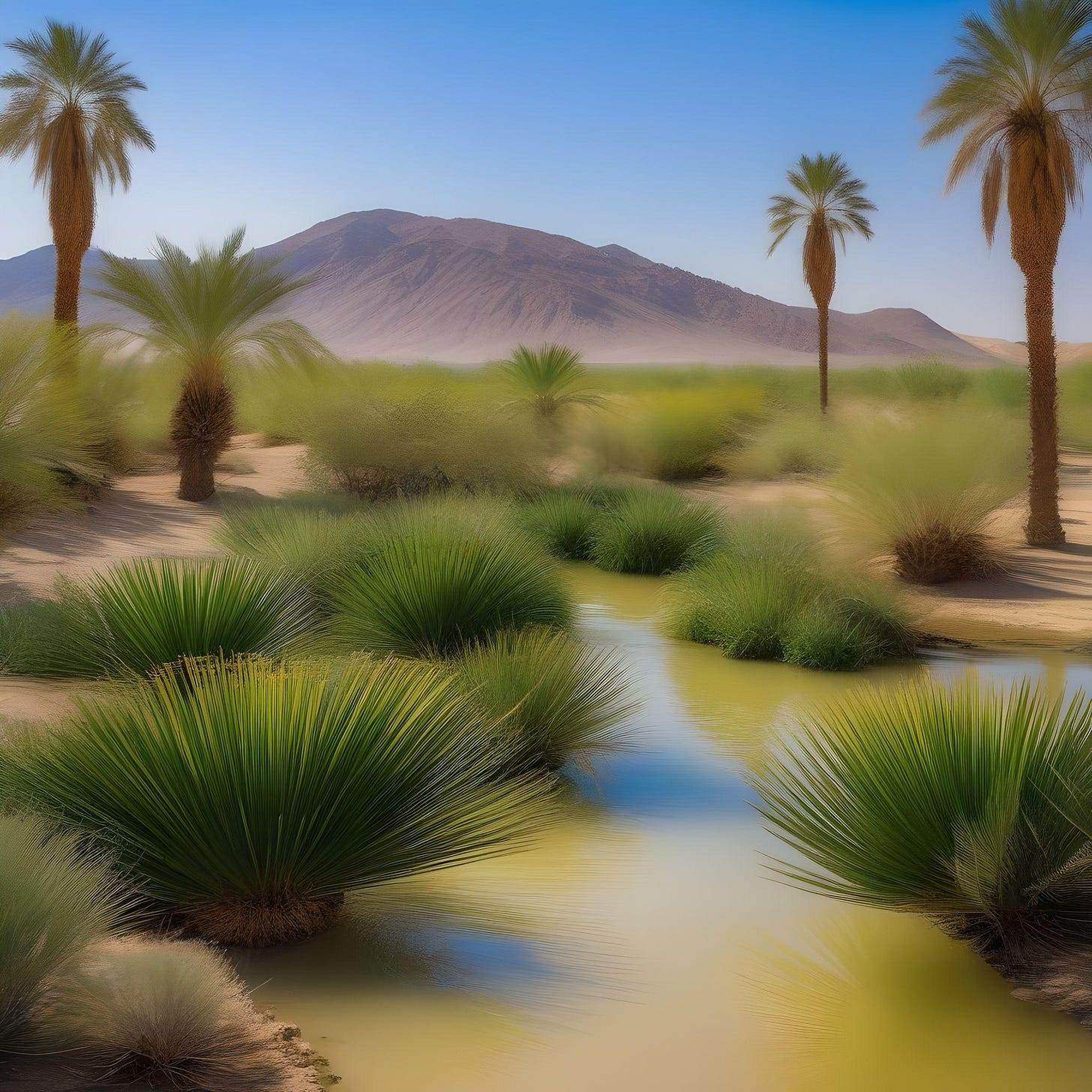Deserts, vast landscapes painted in hues of sand and scorched by the sun, may seem devoid of life. Yet, beneath their arid surface lies a surprising truth: deserts hold a mosaic of water sources that sustain a delicate ecosystem and even support human populations. This article delves into the different ways water finds its way into deserts, showcasing the ingenuity of nature and human adaptation.
The Precious Drops from Above: Precipitation in Deserts
While rain may be a rare guest in the desert, its arrival can be a life-giving event. Episodic downpours, often the result of convectional weather patterns, can transform the landscape into temporary rivers or replenish hidden reservoirs. Even seemingly insignificant forms of precipitation like fog, dew, and frost play a role. In the coastal Namib Desert, a cool ocean current (Benguela Current) create morning fog that condenses on desert plants, providing a vital source of moisture for life there.

Rivers: A Lifeline Through the Sand
Deserts are not entirely devoid of flowing water. Three distinct types of rivers carve their paths through these arid regions:
Exogenous Rivers: These rivers originate outside the desert, carrying water from wetter regions. The mighty Nile, snaking through the Sahara, is a prime example. Its presence not only sustains life along its banks but also creates a fertile ribbon of green amidst the vast desert.
Endoreic Rivers: Unlike exogenous rivers, endoreic rivers begin within the desert but never reach the ocean. Instead, they terminate in an internal basin, forming a lake or an inland sea. The Jordan River, flowing into the Dead Sea, exemplifies this type. While these rivers provide water, their high evaporation rates and lack of replenishment from external sources limit their overall impact.
Ephemeral Rivers: These are the desert's fleeting guests, appearing only after heavy rainfall or snowmelt. They carve temporary channels through the sand, transforming the arid landscape before disappearing as quickly as they arrived. The Marshall and Plenty Rivers in Australia showcase this phenomenon, bringing a surge of life after significant rainfall events.


Beneath the Surface: The Hidden Treasures of Groundwater
Underground, a hidden network of aquifers serves as a vital water source in deserts. These porous rock formations act as natural reservoirs, storing water that percolates from infrequent rainfall events or the flow of exogenous rivers. Humans have long relied on tapping into these aquifers through wells, serving as lifelines for desert communities. The Great Artesian Basin in Australia is a prime example, stretching across several states and providing water to arid regions that would otherwise be uninhabitable.
Springs: Oases of Life
Where groundwater meets the surface, springs erupt, creating natural oases. These can be slow seeps, pressurized artesian springs, or even thermal springs heated by geothermal activity. Each type plays a role in providing reliable water sources for desert life, even during extended droughts. Oasis ecosystems flourish around these springs, offering refuge for plants and animals, and serving as vital pit stops for migrating birds.

Human Ingenuity: Adapting to the Arid Landscape
Throughout history, human ingenuity has played a crucial role in accessing and managing water in deserts. Traditional methods like digging shallow wells have long served nomadic tribes and settled populations. Modern advancements in well-drilling technology have allowed for deeper and more efficient access to groundwater resources. Additionally, oases themselves have been managed and expanded for centuries, creating vibrant communities in the heart of the desert.
Conclusion: A Delicate Balance
Deserts, despite their harsh conditions, demonstrate the remarkable adaptability of life and the ingenuity of humans. Understanding and managing the delicate balance between water sources, both natural and man-made, is crucial for the survival and development of desert communities. As climate change adds another layer of complexity, it becomes increasingly important to ensure the sustainability of these precious water resources – the hidden oasis that allows life to thrive in the desert.







